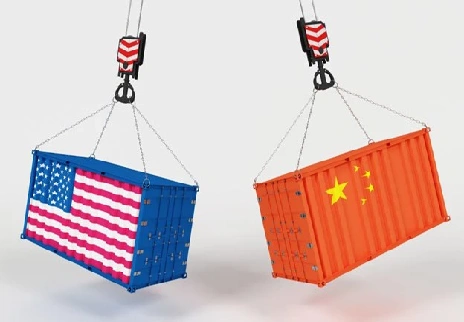For businesses importing goods from China to the United States, navigating U.S. customs clearance can be a complex process. Delays, unexpected fees, and compliance issues can disrupt supply chains and impact profitability. As a U.S. customs clearance company specializing in China-to-USA freight, we help importers streamline the process for faster, more cost-effective shipments.
Why Proper Customs Clearance Matters
U.S. Customs and Border Protection (CBP) strictly regulates imports to ensure safety, legality, and proper taxation. Failure to comply can result in:
- Delays – Shipments held for inspection can take days or weeks to clear.
- Penalties – Fines for incorrect documentation or undervaluation.
- Seizures – Non-compliant goods may be confiscated.
- Increased Costs – Storage fees at ports add up quickly.
A smooth customs clearance process ensures faster delivery, lower costs, and compliance with U.S. trade laws.

Key Steps in U.S. Customs Clearance for China Imports
1. Proper Documentation
Accurate paperwork is critical. Required documents typically include:
- Commercial Invoice – Details product value, description, and Harmonized Tariff Schedule (HTS) codes.
- Packing List – Itemizes contents, weights, and dimensions.
- Bill of Lading (BOL) – Serves as a contract between shipper and carrier.
- Importer Security Filing (ISF) – Must be submitted 24+ hours before loading in China.
- Customs Bond – Ensures payment of duties and fees.
Missing or incorrect documents lead to delays. Working with an experienced customs broker ensures accuracy.
2. Correct HTS Classification
Every imported product must be classified under an HTS code, which determines duty rates. Misclassification can result in:
- Overpayment of duties
- Penalties for underpayment
- Seizure of goods
Our team stays updated on HTS changes to ensure proper classification.
3. Duty and Tax Calculation
Import duties vary based on:
- Product type (HTS code)
- Country of origin (China-specific tariffs may apply)
- Trade agreements (e.g., Section 301 tariffs on certain Chinese goods)
We help importers leverage duty-saving programs like:
- First Sale Rule – Reduces the dutiable value by using the factory price instead of the exporter’s price.
- Duty Drawback – Refund duties on re-exported goods.
4. Compliance with CBP and Partner Government Agency (PGA) Requirements
Certain goods require additional approvals:
- FDA – Food, drugs, cosmetics, medical devices
- EPA – Chemicals, pesticides
- FCC – Electronics
- USDA – Agricultural products
We ensure all PGA requirements are met before shipment arrives.
5. Customs Examination & Release
CBP may inspect shipments for:
- Accuracy of declared value (anti-dumping concerns)
- Product safety (counterfeit, restricted materials)
- Proper labeling (country of origin, safety warnings)
If no issues are found, the shipment is released quickly. If flagged, a customs broker can help resolve disputes.
Common Challenges in China-to-USA Customs Clearance
1. Section 301 Tariffs on Chinese Goods
Many Chinese products face additional tariffs (up to 25%). We help importers:
- Apply for exclusions
- Explore tariff mitigation strategies
- Consider alternative sourcing if costs are prohibitive
2. Anti-Dumping & Countervailing Duties (AD/CVD)
Some Chinese goods (e.g., steel, aluminum, furniture) face extra duties. Proper documentation is crucial to avoid penalties.
3. Intellectual Property (IP) Concerns
CBP seizes counterfeit goods. Ensure suppliers provide authentic products with proper trademarks.
4. Delays Due to Incomplete ISF Filing
Late or incorrect ISF submissions incur fines ($5,000+). We file ISF accurately and on time.
How We Simplify China-to-USA Customs Clearance
As a licensed customs broker, we provide:
- End-to-End Clearance – From document preparation to final delivery.
- Duty Optimization – Minimizing costs through proper classification and trade programs.
- Compliance Assurance – Avoiding penalties with up-to-date regulations.
- Fast Problem Resolution – Handling customs holds, PGA reviews, and disputes.
Final Tips for Smooth Customs Clearance
- Work with a trusted customs broker – Avoid costly mistakes.
- Verify supplier documentation – Ensure accuracy before shipping.
- Stay updated on trade regulations – Tariffs and policies change frequently.
- Plan for possible inspections – Build buffer time into your supply chain.

 Good
Good
 Jun 15 2025
Jun 15 2025


 Home
Home





 Email:
Email:
 Address: 216, Building A1, Fuhai Industrial Zone, Fuyong Community, Fuyong Street, Baoan District, Shenzhen, China
Address: 216, Building A1, Fuhai Industrial Zone, Fuyong Community, Fuyong Street, Baoan District, Shenzhen, China



